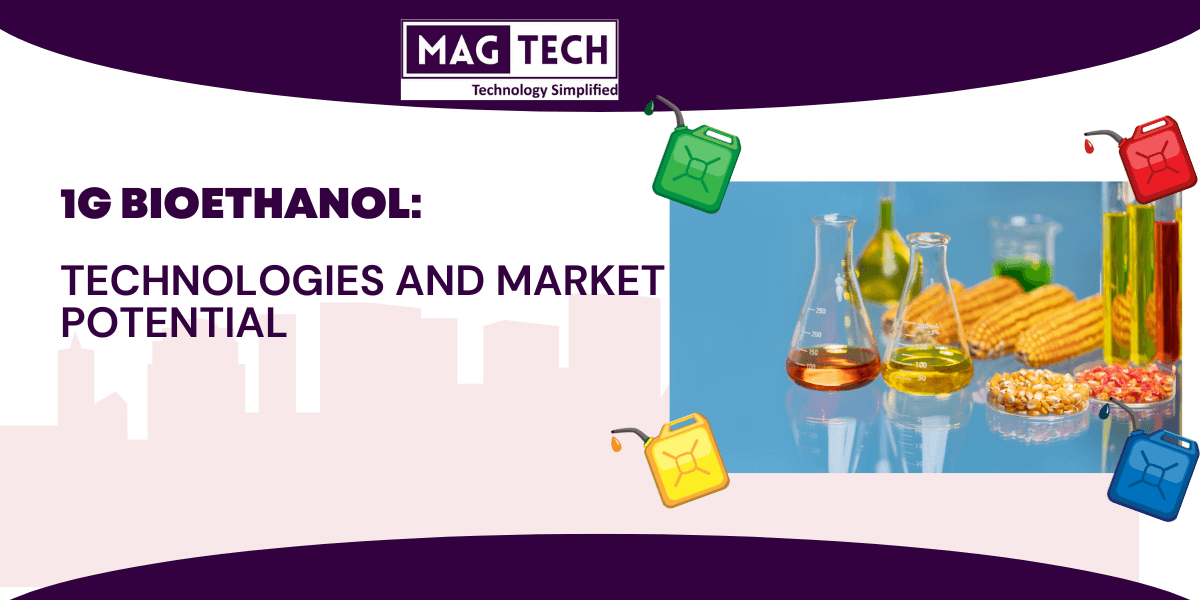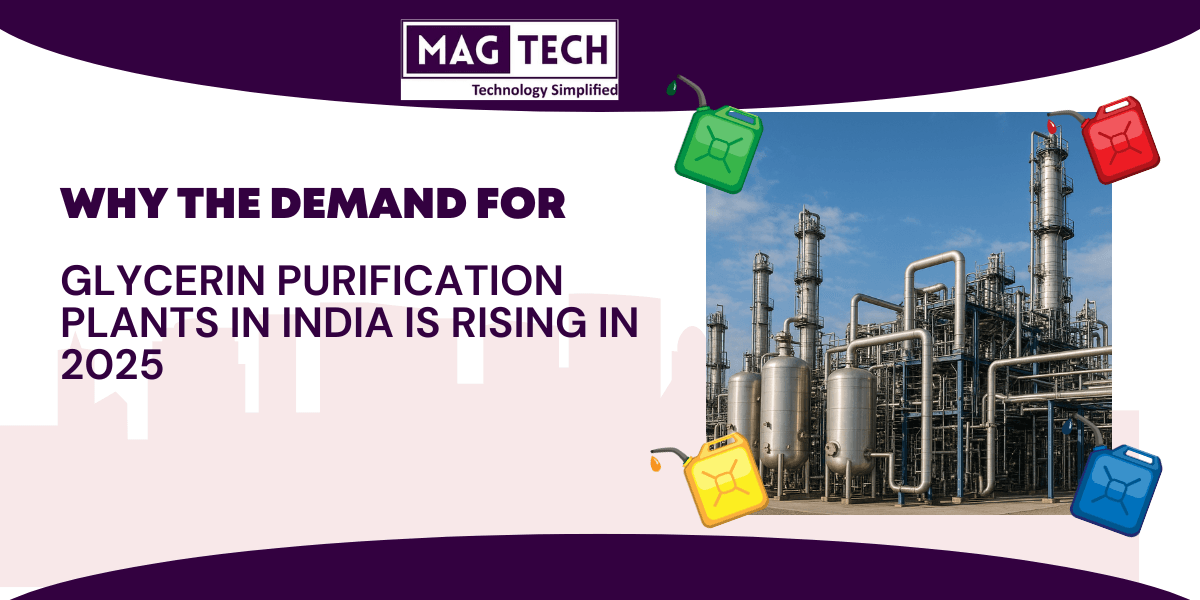Biodiesel is the primary pillar of our transition from fossil fuels to greener alternatives. It is prepared from used cooking oil, restaurant grease, non-edible vegetable oils, and animal fat.
The process requires catalysis to convert fats into esters. Biodiesel is scientifically called fatty-acid methyl esters (FAME). It is produced from the transesterification of fatty acids in the presence of catalysts.
These catalysts are of two types: Homogeneous and Heterogeneous.
Heterogeneous catalysts are better than homogenous catalysts regarding separation, reusability, and chemical stability. To go deeper, we must understand what heterogeneous catalysts are first.
Table of Contents
ToggleWhat are Heterogeneous Catalysts?
Heterogeneous catalysts are solid materials that facilitate chemical reactions while remaining in a different phase from the reactants. They are typically solid catalysts with liquid or gas reactants. These catalysts work by providing an active surface where reactants can adsorb, react, and then desorb as products.
Homogeneous catalysts are in the same phase as the reactants (usually both are liquids or gases). On the other hand, heterogeneous catalysts are easier to separate from the reaction mixture. Their simpler recovery and reuse make the biodiesel production process cost-efficient. Their phase difference also often leads to higher stability and selectivity in industrial applications.
Types of Heterogeneous Catalysts Used in Biodiesel Production :
Heterogeneous catalysts are a crucial raw material for biodiesel production. The different types of such catalysts are:
1. Metal Catalysts :
- Platinum (Pt): In automobiles, catalytic converters widely use it. It is also used for the transesterification of fatty acids.
- Palladium (Pd): Hydrogenation reactions use palladium. It is effective in producing fine chemicals and pharmaceuticals. It is also a key component in catalytic converters and plays a role in cross-coupling reactions.
- Nickel (Ni): Nickel is commonly used in hydrogenation reactions of fats and oils in the food industry. It is also employed in the production of synthetic fuels and in the reforming of hydrocarbons to produce hydrogen gas.
- Ruthenium (Ru): It is known for its ability to catalyze ammonia synthesis in the Haber-Bosch process. Ruthenium is also used in hydrogenation and oxidation reactions.
Metal catalysts are costlier than homogeneous catalysts. Also, their absorption step is the rate-limiting step in the transesterification process. In some cases, the reaction conditions can be harsh causing reactor corrosion and catalyst latching at high temperature and pressure.
2. Metal Oxides :
- Titanium Dioxide (TiO2): Titanium dioxide can harness sunlight to drive reactions such as the degradation of pollutants in water and air. It is also utilized in photocatalysis.
- Alumina (Al2O3): It serves as a support material for other catalysts like platinum or palladium. Alumina is used in hydrocracking and hydrotreating processes in the petrochemical industry.
- Zinc Oxide (ZnO): It is employed in the synthesis of methanol from carbon dioxide and hydrogen. In the production of gasoline, zinc oxide functions as a catalyst.
Metal oxides are good heterogeneous catalysts but have selective reactivity. Also, regenerating complex metal oxides can draw more capital expenses. Sintering and poisoning can cause these items to lose their functionality.
3. Zeolites
1.ZSM-5: ZSM-5 is a type of zeolite. It is used in the petrochemical industry for catalytic cracking and converting heavy hydrocarbons into lighter ones.
2. Faujasite (Y-zeolite): It is another zeolite used in catalytic cracking. Faujasite has a large pore size and is known for its stability. It is effective in breaking down large hydrocarbon molecules.
Zeolites are costlier than conventional catalysts. They also get deactivated by coking (carbon deposits) and turn useless after repetitive use. Regenerating zeolites is also difficult and they often lose aluminium due to potential dealumination.
4. Supported Catalysts
1. Platinum on Alumina: Platinum on alumina is crucial in refining petroleum to produce high-octane gasoline. It is also used in the hydrogenation of aromatics and the oxidation of volatile organic compounds (VOCs).
2. Palladium on Carbon (Pd/C): This heterogeneous catalyst is used in hydrogenation reactions. It is especially used in the pharmaceutical industry for reducing nitro compounds to amines and in hydrogenating alkenes and alkynes to alkanes.
Supported catalysts have limited thermal stability and require precise control over bonding and dispersion in the active phase.
5. Mixed Oxides
1. Ceria-Zirconia (CeO2-ZrO2): This mixed oxide catalyst is used in automotive catalytic converters to improve the efficiency of three-way catalysts by providing oxygen storage capacity.
2. Perovskite Oxides (ABO3): These materials, with a general formula ABO3, are used in catalytic oxidation reactions.
Mixed oxides are quite complex to prepare. Thus, they attract more cost than homogeneous catalysts. Phase separation is a challenge while using mixed oxides. It leads to non-uniformity in active sites and reduced catalytic efficiency.
6. Carbon-based Catalysts
1. Activated Carbon: We use activated carbon as a catalyst and support for catalysts. It is effective in adsorption processes such as the removal of impurities from liquids and gases.
2. Graphene Oxide: It is known for its high surface area and functionalization capabilities. Graphene oxide is used in the oxidation of alcohols and in the reduction of nitro compounds.
Carbon-based catalysts can be chemically reactive leading to degradation. Oxidative environments can lead to catalyst degradation faster. Also, they have lower mechanical strength and are less durable than metal oxides.
Benefits of Using Heterogeneous Catalysts in Biodiesel Production
The use of heterogeneous catalysts offers several significant advantages across various industrial processes. Below are the key benefits:
1. Easy Separation
Solid-state: Heterogeneous catalysts are in a different phase (typically solid) from the reactants. This state allows for straightforward separation after the reaction. It reduces the need for extensive purification processes and makes the production process cost-effective.
Reusability: Due to their solid nature, these catalysts can be easily recovered and reused in multiple reaction cycles. They enhance the level of sustainability of biodiesel production.
2. Enhanced Process Efficiency
High selectivity: They often exhibit high selectivity towards desired products and minimize the formation of unwanted by-products. This improves the overall yield and purity of the reaction.
Increased reaction rates: These catalysts can significantly speed up reaction rates by providing an active surface. This surface can adsorb reactants and cause reactions. It leads to faster production of biodiesel.
3. Durability and Stability
Thermal stability: Heterogeneous catalysts typically exhibit high thermal stability. Such stability allows them to operate effectively under extreme temperatures. This feature is particularly useful in industrial processes such as petrochemical refining.
Resistance to deactivation: Many heterogeneous catalysts are resistant to poisoning and deactivation. They maintain their activity over extended periods and reduce downtime and maintenance costs.
4. Versatility in Applications
Wide range of reactions: These catalysts can be used in a variety of chemical reactions, including hydrogenation, oxidation, cracking, and polymerization.
Adaptability: Heterogeneous catalysts can be tailored to specific reactions by modifying their composition, structure, or support materials. This enables precise control over reaction outcomes.
5. Environmental Benefits
Reduced waste: The high selectivity of heterogeneous catalysts leads to fewer by-products. It reduces waste generation and environmental impact.
Lower energy consumption: These catalysts contribute to lower energy consumption in industrial processes. They can do this by increasing reaction rates and reducing the need for high temperatures or pressures.
Demerits of Heterogeneous Catalysts in Biodiesel Production
Using heterogeneous catalysts in biodiesel production has another side to consider. Apart from their benefits, there are a few demerits that pose challenges to producing biodiesel at a mass scale.
1. Catalyst recovery – recovering and recycling heterogeneous catalysts is a big challenge. Additional separation steps increase the overhead cost of biodiesel production.
2. High operating temperatures – High temperatures and pressure are mandatory requirements for heterogeneous catalysts to function. It may increase the energy cost involved in biodiesel manufacturing.
3. Mass transfer limitation – Poor mass transfer between catalysts and reactants slows down the reaction rate and biodiesel production.
4. Catalyst deactivation – Glycerine is deposited on heterogeneous catalyst surfaces (reaction sites), causing catalyst deactivation. Catalyst deactivation occurs when glycerine is deposited on heterogeneous catalyst surfaces (reaction sites). Hence, their effectiveness reduces over time.
Due to these demerits, heterogeneous catalysis for biodiesel production is still in the research and development phase.
Tapping the Benefits of Heterogeneous Catalysts in Biodiesel Production Process
Incorporating the benefits of heterogeneous catalysts requires proven expertise. In fact, selecting a heterogeneous catalyst for biodiesel production is a challenge too. Under low co-miscibility, heterogeneous catalytic transesterification features improper reaction site area, mass transfer limitation, high operating temperature, etc, thus increasing both the capital and operating cost of biodiesel production and questioning the viability. This is where MAGTECH comes into the picture.
We have decade-long experience and a team of diverse experts in biodiesel production. We explain and educate our clients regarding catalysts used for biodiesel production. Let us explain how the biodiesel plant setup cost in India varies in terms of raw materials. Contact us to learn more about such catalysts and get a budget-friendly solution.


